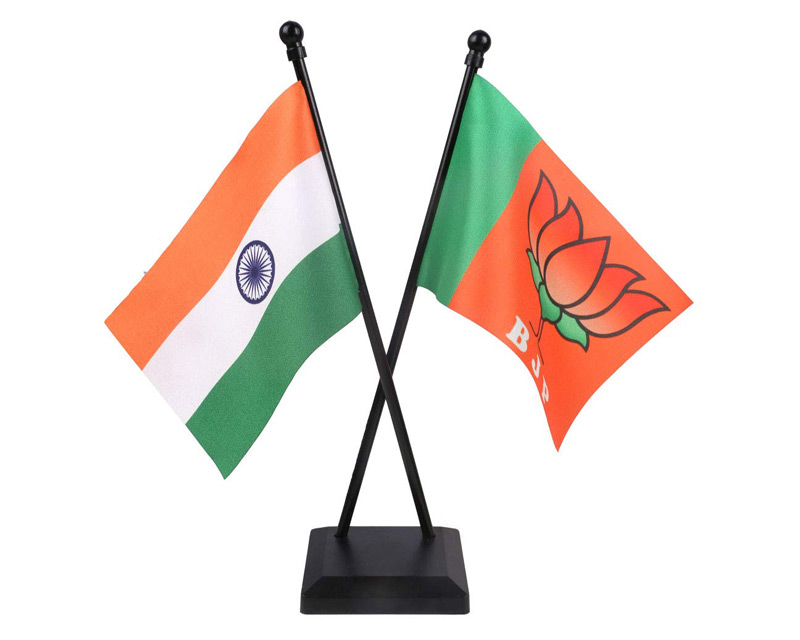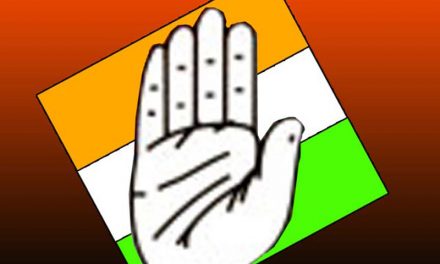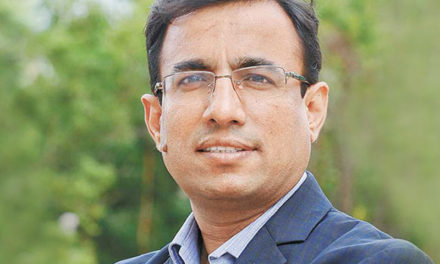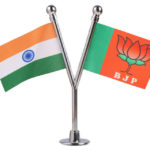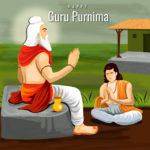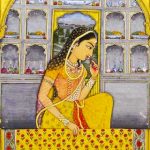Elections are over, the new Government has started working and the nation is returning back to normal. Reams are being written about the surprise victory of BJP and NDA. Analysts and pundits, in India and the world over, are busy dissecting the verdict and what led to the phenomenal victory of BJP.
While this result was a surprise to most of the populace, and each one has his or her own interpretation of why it happened, the bigger question now is about the future.
This election was a landmark in many ways. The crystal ball gazing is not just about next elections in 2024, or 2029 but about what this means for the next 10, 20, or 30 years of Indian polity, about who will dominate the Indian politics for the near future and why.
This election signified the final transition from Congress to BJP as the principal actor on the national stage for the coming future. BJP is well set to dominate and be the key influencing party for the polity and the power structure, both through the federal government and the state governments, for the next 25-30 years.
So those in media, academia, and political parties who were expecting the defeat or weakening of BJP in 2019 are in for a long haul of disappointment as it is very unlikely for any major challenger to emerge, at a national stage, in the near future.
I say this for five main reasons and will explain why in detail.
This is written as a multi-part series with the first part focused on the primary reason and the core reason responsible for BJP’s rise and expected dominance.
Harnessing the selfless givers for a larger cause, and opposition of hypocritical takers
The first and the primary reason is the “giver” energy bank. It is BJP’s ability to harness the “Sevabhav”, the “Giver’s instinct” in the Indian populace and a very strong, motivated and growing cadre which personifies this instinct.
RSS, the ideological parent of BJP is the largest volunteer organization in the world which has had selfless workers working for the goals and agenda of RSS for more than three generations without expectation of anything in return.
RSS stands for “Rashtriya Swayamsevak Sangh”. What gets talked about often is “Rashtriya” or their concepts of Nationalism and whether it is synonymous with Hindutva. What also has got discussed always is the third word “Sangh” which means an organization, the famed organization structure, and discipline and how it has helped BJP.
However, what often escapes scrutiny is the middle world – “Swayamsevak”.
Swayamsevak means a volunteer, whose “swayam” (self) is focused on “seva”
(“service”). This spirit of selfless service (harnessed as an organization for the cause of nation-building) has been the bedrock of RSS.
Congress had their own “Seva Dal” which interestingly was set up under the name Hindustani Seva Mandal (on January 1, 1924). Jawaharlal Nehru was its first president. This was renamed as “Congress Seva Dal” in 1931, making it as the central volunteer organization of Congress.
Congress Seva Dal was supposed to be the volunteer wing of Congress, set up almost forty years after Congress was formed in 1885, with a stated goal to provide volunteers for the party.
The goal of the Congress party, when set up in 1885, was to engage with British for more rights for Indian people and the first president was AO Hume, an Englishman. It was encouraged by the British Government as a safety valve.
In contrast, RSS was set up after Congress Seva Dal in September 1925 in Nagpur. RSS was founded as an organization of volunteers to build a strong nation. Dr. K B Hedgewar, a former revolutionary and an ex-congressman himself, felt that getting freedom can be only a secondary goal but the long-term goal needs to be a strong and proud nation which can never be enslaved again. He committed himself to build a cadre of volunteers devoted to nation-building which could be an endless pursuit.
He did not see RSS as a competition to Congress. All RSS men were, and even today are, free to join Congress if they want to and believe in its agenda.
Bharatiya Jan Sangh, the political arm of RSS came into being in October 1951, twenty-six years after RSS was formed. Shyamaprasd Mukherjee, a politician, who also had been a minister in Nehru’s first cabinet was the first president of BJS.
Over last 93 years, RSS has grown to be the largest volunteer organization in the world and is the fountainhead and “holding company” for more than 35 other organizations (BJP is just one of them). There are multiple organizations working in areas like trade union (BMS), student welfare (ABVP), Farmer issues (BKU), Women’s wing (Seva Samiti) and so on. Each of them is a leading organization in its area.
Most people assume that RSS always supports BJP and helps in elections providing feet on the ground. While that is conceptually true, what is unknown to many is that all RSS cadre has not worked for the BJP for every election. While individual RSS swayamsevaks are free to work for BJP, they have not participated in election campaigning as an organization in all the elections.
Of the 15 elections from 1947 to 2014, RSS has completely and formally been engaged in national elections only thrice. First was in 1977, when the Janata Party defeated congress and a non-Congress government was formed for the first time. The second was in 1991 when BJP won 120 seats, crossing 100 for the first time, and ensured Congress formed its first minority government. The third was in 2014. This was the first government with a clear majority for a non-Congress party and it lasted its full term.
So every time RSS has come out in full force, BJP has had a dramatic jump in its seats and it has impacted the balance of power at the center. RSS “Swayamsevaks” did not come out in full force on any of the 12 elections before 2014, and it is no surprise that BJP did not have a dominating impact in any of these elections.
This spirit of volunteerism or spirit of service, or “giving” has been the core for RSS and it has grown tremendously. The forces of power and politics play secondary to spirit of service in the overall structure and scheme of things when it comes to BJP and RSS.
The RSS Sarsanghchalak is the supreme head and his address to his cadres on Vijayadashmi is televised and covered live by the media every year. His statements are followed by all keenly and foreign dignitaries, ambassadors, and corporate chiefs like Ratan Tata travel to Nagpur to meet him. The BJP president always goes to RSS office to meet the Sarsanghchalak.
The political arm is always treated as a wing of the parent organization and does not dominate the parent arm. It is a mother-child relationship.
In contrast, the Congress Seva Dal remains a symbolic organization whose existence is almost unknown to masses and is hardly known to have any impact within Congress power structure. The name of the head of Congress Seva Dal may not be known to an average congress voter or worker, let alone to media or the rest of the country. He or she has no significance in the scheme of Congress politics. Can you imagine Sonia Gandhi or Rahul Gandhi travel to meet the head of Congress Seva dal whose name is not known to anybody?
While human beings are naturally selfish and think of their own interests first, we underestimate the power of the selfless individuals or the potential of “selfless instinct” in individuals. “Spirit of service” and working selflessly for a larger cause is fundamentally a powerful force. It can be and has been harnessed effectively world over.
Communists owe their tremendous growth in early 20th century to a large mass of people who came forward in this spirit. However, it withered away when the governments world over could not do justice to this spirit which brought them to the power and the contradictions of the philosophy became apparent when compared with Capitalism.
AAP tapped into this spirit when urban educated in India and outside joined AAP in a spirit of “Alternative and clean politics”. Soon they too got disillusioned with Kejriwal’s nonperformance, both in power in Delhi and in elections in other states.
Religion and charity organizations harness this spirit and focus on social and religious activities. The Church has grown tremendously world over in the last 2000 years because they have learned how to harness this instinct amongst the people.
BJP is the only party that has effectively harnessed this spirit of giving and selflessness for its political rise on a sustained basis, thanks to RSS.
The “selfless volunteer” base for other parties in comparison has been very small and has not grown but is linked to the rise and fall of the fortunes of the party. RSS has over five million volunteers and a committed cadre of “Pracharaks”-people who take an oath to not marry and to devote their life to RSS and the cause. This volunteer base is the largest in the world today.
In contrast, if you try to count the motivated volunteer base of other national political parties like Congress or Communists, there is no comparison.
Regional parties like DMK, ADMK, YSRCP, TDP, TRS, BSP, SP, BJD, TMC, NCP and other smaller parties have all less than 26 seats today and can in no way pose a challenge to BJP across the country as a major challenger. Their volunteer base is limited to their regions and is of no consequence when it comes to creating a national alternative.
Volunteer base of selfless workers is only one part of the picture. The other part is the perception of the people and the reality about the gains the party and the leadership is making and is seen to be making from the power.
Even the most vehement critics of Narendra Modi admit that he is not corrupt and does not use power to enrich himself or his family. They accuse him of being power-hungry but he has been able to convince people that he needs power to do good for the masses and build a “New India”, not for his own enrichment.
There is no proof of corruption against any member of Cabinet of BJP in last five years. Whatever flimsy charges have been brought up on Rafael, or against Shah for his son, failed to stick.
BJP won because people believe that Modi as a leader and BJP as a party are not in power for individual gains but want power for a better future for tomorrow. This new tomorrow has many names, be it making “New India”, or a “Digital India” , a “Swacchh Bharat” or “Ek Bharat, Shrestha Bharat” (One India Great India) or “Sabka Saath Sabka Vikas”
The opposition parties, by contrast, are seen as individuals or groups whose sole motive is to win power to enrich themselves and their family, or their followers.
When they use slogans like secularism or use artificial divides of language, caste, community, and regionalism to convince voters to vote for their family or party, voters can see the contradiction and vote with their feet. Whenever people have associated BJP or its allies with corruption, (like in Punjab) they have lost.
With the exception of Communists who have become totally irrelevant except in Kerala, every single political party is associated with corruption and an image of “taking” in the popular perception.
It is hard for these parties to convince people that they are here for a larger cause and people should come forward in a spirit of “selfless giving” for them.
The opposition to BJP comes not just from political parties. It is also from lobbies in media and academia who are opposed, not due to ideology, but due to the spoils of power and benefits they enjoyed during the long congress rule at the center.
These elite analysts in media and academia who wear a façade of neutrality and hide behind veneers of liberalism and secularism, hide the fact that they are actually, power brokers who want a share in the power and are using the fancy labels to dupe voters so they can continue to enjoy the spoils of power.
Check here for the discussions about Lutyens media and power cabal where they openly admit this
https://www.youtube.com/watch?v=UrVaa5CQkFc
So the battle of BJP and non-BJP forces – which many attempts to show as battle of communalism versus secularism or fascism vs democracy is actually a battle of “givers” and “takers”. We have the millions of selfless RSS volunteers and their families, and the large percentage of people amongst the voters who are motivated by the spirit of “giving” to a larger cause. When Modi urged people to give up subsidy for Gas or railway concessions, millions responded to his call and gave up their subsidy.
Yogendra Yadav, a strong critic of Narendra Modi admitted in a session that people voted beyond their selfish interest.
https://www.youtube.com/watch?v=dQPgoW6sdHc
As opposition tries to copy BJP’s methods, they will try to set up the volunteer cells and invest in this energy. However, it is easier said than done.
One can invent causes and issues, but for it to have a lasting impact, it needs to be genuine and should have scale.
The “giver” energy momentum was with Congress from 1885 to 1947 when the nation was behind Congress, as it slowly became the main front to unite against the British. This momentum carried it forward and brought it to Power which it sustained with its tricks of divide and rule. The energy behind BJP which brought it to power in 2014 will continue to propel its growth till the parties find a way to match this “giver energy” or BJP gets corrupted by power and falls into trap of “takers”.
With BJP’s “giver energy” pitted against the perception of “hypocritical takers” in opposition parties and lobbies, the balance of power seems to be in BJP”s favor for a long time to come.

